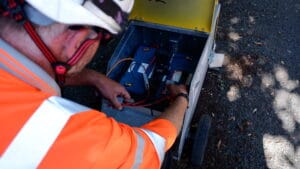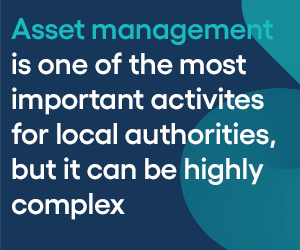Field Management (FM) refers to the organisation and logistics of any operational processes carried out beyond company property, often referred to as taking place in the field. This commonly applies to construction.
Companies with a large proportion of their workforce working in the field face many administrative and logistical considerations, much more so than traditional office-based enterprises. In addition to standard management processes such as payroll and HR, specialised operational processes required for safe, efficient and profitable projects in the field must also be planned and carried out. These commonly include:
· Creating, printing and distributing job packs
· Scheduling works and allocating required assets
· Tracking personnel availability and assigning them to projects
· Managing plant, equipment, vehicles and material stock
· Creating and distributing work and safety forms
· Mitigating hazards and enforcing safety procedures
· Recording, transcribing and collating work-related data
· Creating bills of quantities, quoting and invoicing customers
In addition to juggling multiple complex tasks, issues can be further exacerbated by certain inevitabilities that come with remote work – distance, connectivity, transport and weather. This means administrative staff must have the flexibility to adapt to the unique conditions of every project, even on short notice.
Traditionally, businesses within field-based industries have predominantly operated on manual, paper systems and fragmented legacy spreadsheet software. As technology has become more specialised and accessible, companies offering an integrated, digital alternative have emerged in the market. Namely, field management software. Despite also being marketed under other terms, including job management software, field operations software and field service management software, many of these systems possess the same general capabilities.
In summary, field management software provides a scalable, digital solution that facilitates the communication, organisation and logistics that enables businesses in field-based industries to effectively manage all their major operational processes.
What are the features of field management software?
Field management systems fall on a broad spectrum in terms of how specialised they are to a particular industry. Some are purpose-built for the specific needs of a single sector, while others target a wider range of industries with a more general set of features and greater flexibility. Despite this, most field management software solutions rest on a common foundation of essential capabilities. These include:
Administrative Dashboard
The core of a field management system rests in its dashboard. While some systems offer a standalone desktop client, dashboards most commonly take the shape of a browser-based interface. The advantage of this approach is general compatibility with all popular operating systems, meaning businesses don’t need to invest in new hardware when adopting field management software.
In terms of functionality, the dashboard is the central hub from which users can access the various tools of the system. Most systems also utilise this space to provide a brief overview of important KPIs including project, billing and invoicing statuses, the number of ongoing jobs, forms exchanged and most recent dashboard changes.
Mobile Accessibility
A mobile application is often the second element to a field management system – the field counterpart to the dashboard. Most established field management software companies provide compatibility with the latest version of iOS and Android, distributing their app for free through the App Store and Google Play Store respectively. Similar to the browser-based approach, this provides further accessibility, enabling field workers to access the software through their existing mobile devices.
Mobile applications offer an interface through which field operatives can access all the information assigned to them through the dashboard. Users can view relevant job information, complete forms and receive communications from the administrative team when changes occur. The most comprehensive field management solutions also offer offline capabilities. Through storing information from the latest synchronisation, mobile users can continue to view the necessary information and continue working. Once a connection is regained, all new information is relayed to the dashboard, and vice versa.
Cloud-based Record Keeping
All information that would traditionally be stored in folders and filing cabinets is instead hosted digitally on remote servers. This is a core factor which provides field management software so many of its characteristic advantages. All files, including forms, operative qualifications, invoices and reports are encrypted and securely stored in a single database that offers resilience against damage, theft and data loss.
Job Management
The ability to create jobs is a basic yet crucial element of field management software. As a digital replacement for physical job packs, these include everything their paper counterpart would. Job specifications, locations and task lists, site drawings and diagrams, risk assessments, site safety checks and relevant safety regulations.
Dashboard users can then create individual tasks and events, such as site visits. Individual users or groups can be assigned to tasks, along with plant, equipment and vehicles. Field management systems benefit from the basic quality of life features users would come to expect from any piece of software handling data manipulation. These includes automatically recurring tasks, bulk editing and data filtering capabilities.
Scheduling
A key aspect of field management software that enables strategic planning and resource allocation. Often working in tandem with other features, this enables users to create individual tasks against a project and assign them to a specific time and date. Within tasks, most systems allow dashboard users to assign a range of assets from the central database. This can include individual operatives or groups, plant, equipment, vehicles and relevant work forms. The most powerful field management solutions can also track asset status, operative availability and qualifications, triggering notifications if a conflict is detected.
Asset Management
Plant, equipment, vehicles, stock and operatives form the backbone of field-based businesses. Most field management solutions will provide a record-based system for tracking assets. At a base level, this feature already benefits from standard data-manipulation capabilities such as bulk editing, data filtering and the ability to import and export information. The ability to attach documents such as instructions and safety guidelines should also be available. Aside from collating asset specifications in a centralised database, more comprehensive systems also provide additional features that streamline the process further.
This can include status tracking, i.e., whether assets are operational or defective, as well as the scheduling of maintenance reminders. Systems with workflow automation capabilities can expedite this process by automatically updating asset status based on data from forms, such as vehicle safety checks or incident reports. A more granular level of detail can also be offered, should a system provide support for GPS tracking, Google Maps or what3words. Using QR codes and real-time data, dashboard users can view the last known locations of assets as well as the operatives who last used them.
Digital Forms
Digital form assignment and completion capabilities are a standard feature included in field management software. Forms can be selected from a catalogue and assigned to tasks or users through the dashboard. These are then communicated to the mobile counterpart of the software for completion by operatives on-site. Digital forms can have a wide scope in terms of capabilities. The most basic systems will offer simple form completion with tick boxes, drop-downs, fields and signatures. More advanced systems can offer additional features such as calculated fields that enable more complex forms such as dynamic risk assessments, attaching annotated photographs as well as integrated workflow automation.
Once submitted, forms are sent to the desktop dashboard, where they can be viewed, collated and utilised for further processes. Digital signatures, which often include date, time and location tagging inform administrative teams which users are completing forms, and whether they’re taking place at the right time and place. This information can be utilised to build comprehensive audit trails that can be referred to should the need arise.
The most powerful field management software will also allow users to build and customise forms to regulatory standards. This may take the form of a block-based system, where dashboard users can pick from a range of field types and create complex forms fit for specific purposes.
Team Communication
All field management systems facilitate some level of team communication. This encompasses a wide range of capabilities such as sending job information or receiving form data. While more comprehensive software may provide direct messaging as a feature, this isn’t a requirement to facilitate team communication. Push notifications informing operatives of changes to jobs, schedules or warning of hazards on-site are key examples of the type of communication field management software enables. The key aspect, in this case, is the instant communication of information to and from site.
User Tracking
A lesser-seen feature of field management software, the ability to track user locations in real-time is exclusive to the most comprehensive systems. By building on date, time and location tagging systems utilised in digital forms and asset management, dashboard users can gain a granular breakdown of user activity and reactively schedule operatives based on their proximity to a site.
Workflow Automation
A feature that can vary in power from system to system. More customisable and adaptable field management software offers the ability to build comprehensive automated workflows that facilitate further integration between individual features. This can include triggering updates in asset status or job progress based on form data, scheduling automatic service reminders if vehicles are effective and sending communications based on the severity of incidents on-site.
Reporting
Any system which provides a collated overview of site data through the dashboard offers some form of reporting capabilities. This can be as basic as providing dashboard users a brief overview of work progress on sites. More powerful field management software enables users to customise the data being displayed, as well as exporting sharing it through customisable PDFs. This data can then be utilised to draw insights and facilitate more comprehensive planning.
Billing and Invoicing
Field management software does not aim to supplant accountancy systems, however some may offer limited features for creating a bill of quantities (BOQ), quoting and invoicing customers. A bill of quantities can be automatically created alongside job packs, drawing from the system’s records to create a list of equipment, stock or any other job-relevant resources. Most systems then enable dashboard users to customise margins and create quotes and invoices based on the BOQ, which can be shared directly from the dashboard. The financial capabilities of field management software work best when used in tandem with a full accountancy package such as Sage Business Cloud or Xero. That’s why pre-built integrations are often readily available for no additional price.
What are the benefits of field management software?
With access to the large suite of features field management software provides, business owners have a reliable framework for streamlining their operational processes. This brings a wide range of substantial benefits.
Increased cost efficiency
The time savings and increased efficiencies brought by field management software means teams can achieve more in the same amount of time. With less time spent on repetitive administrative tasks and travel between sites, job turnaround can increase and firms can take on more projects with the same amount of resources.
Real-time overview
The ability to get an overview of job progress and data submission in real-time provides field managers detailed visibility of which works have been completed, which are in progress and the resources required.
Data-driven decisions
Instant access to live information from sites enables the office to be more reactive and make informed, data-driven decisions. This gives businesses greater flexibility to extract insights and effectively strategise.
Frictionless communication
The streamlined exchanged of data to and from site enables frictionless team communication and allows staff to respond to updates and incidents as they occur.
Streamlined processes
Eliminate paperwork and siloed spreadsheet systems as well as streamlining repetitive, manual processes eases demand on administrative teams, allowing them to use their time more productively.
Customer satisfaction
A stream of high-quality, instant data means key stakeholders and clients can be kept constantly up to date on progress. Transparency brings increased customer satisfaction and enables firms to retain and tender bigger contracts.
Increased resilience
With offline working, mobile access and synchronisation, works can proceed regardless of conditions. Should operatives encounter poor weather or low connectivity, operations can continue without losing efficiency.
Scalability
Field management software is built to support the needs of businesses of all sizes. Being cloud-based, these systems can handle much greater volumes of data than traditional systems. This means management teams can re-allocate time spent on implementing logistical infrastructure elsewhere,without concerns about their organisation outgrowing its system.
Why is field management software necessary?
It can be argued that field management software has become a necessity due to the current state of many field-based industries. Construction, civil engineering, rail and similar sectors have long been plagued by falling productivity, increasing material prices and delayed job turnaround. The lack of skilled tradesmen and labourers also means that companies are being forced to take on greater workloads without the increased resources to match. The efficiencies brought by field management software provide tools that enable firms to achieve more with their time and resources. With more time and better quality data, companies can effectively plan ahead and ensure their businesses withstand the challenges to come within already turbulent industries.
There has been acknowledgement across field-based industries that digital transformation is essential in addressing core issues with productivity and efficiency. Individual companies that have adopted these systems report increases in their KPIs, whilst those who continue to operate on legacy systems continue to under-perform.
How does field management software apply to construction?
Construction – groundworks in particular – can involve long-term projects on a large scale. These require a solid logistical foundation, requiring many operatives, resources, plant, equipment and vehicles. A major goal of construction projects is to ensure a hazard-free turnaround from planning through to completion.
Each process on-site requires a specific set of resources, so project management teams need to have the flexibility to allocate and re-allocate equipment, labour and materials as required. Field management software provides a firm foundation for these processes and enables teams to be far more reactive with asset management and scheduling. Qualification tracking also supports more precise resource allocation, ensuring the right operatives are on-site. Digital forms facilitate the enforcement of strict SHEQ processes, while instant data transfer and centralised record keeping allows safety teams to build robust audit trials that greatly aid in hazard prevention and risk management.
For example, M.V. Kelly uses field management software for construction to ease the work of SHE inspectors with instant notifications of non-conformance and defects, allowing site supervisors and foremen to address risks in a timelier manner.





























